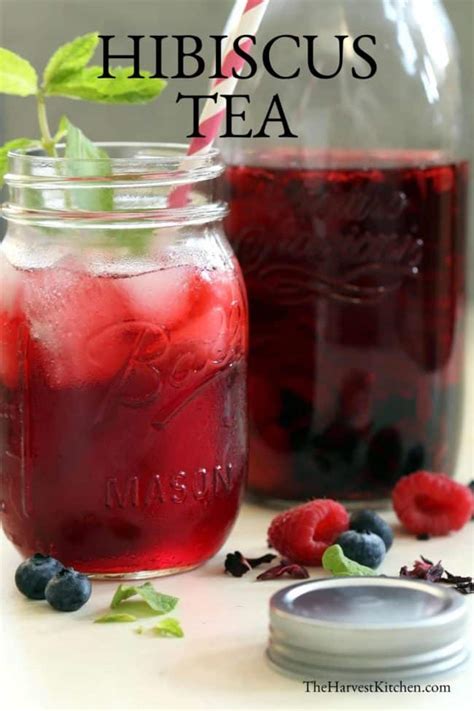Hibiscus Tea: A Refreshing and Healthy Brew
Hibiscus tea, also known as roselle tea or karkade, is a vibrant and flavorful beverage with a surprisingly tart taste. This popular drink isn't just delicious; it's also packed with antioxidants and potential health benefits. Learn how to make this refreshing tea at home with our easy-to-follow recipe.
What is Hibiscus Tea?
Hibiscus tea is made from the dried calyces (sepals) of the Hibiscus sabdariffa plant. These deep red calyces impart the tea's characteristic ruby-red color and tangy flavor. It's naturally caffeine-free, making it a perfect alternative to coffee or black tea for those seeking a caffeine-free option or a calming evening beverage.
Health Benefits of Hibiscus Tea
Many studies suggest hibiscus tea offers various health benefits, including:
- Rich in Antioxidants: Hibiscus is bursting with antioxidants, which help protect your cells from damage caused by free radicals.
- May Help Lower Blood Pressure: Some research indicates that hibiscus tea may help lower blood pressure. However, it's crucial to consult your doctor before using hibiscus tea to manage blood pressure, especially if you are on medication.
- May Aid in Weight Management: Preliminary research suggests potential benefits for weight management, but more studies are needed to confirm these findings.
- May Improve Liver Health: Some studies indicate positive effects on liver health, but further research is required.
Ingredients You'll Need:
- 1 cup of dried hibiscus flowers
- 4 cups of water
Step-by-Step Hibiscus Tea Recipe:
Brewing Your Hibiscus Tea:
- Boil the Water: Bring 4 cups of water to a rolling boil in a saucepan.
- Add Hibiscus Flowers: Add 1 cup of dried hibiscus flowers to the boiling water.
- Simmer: Reduce the heat to low and simmer for 10-15 minutes. This allows the hibiscus to fully infuse and release its vibrant color and flavor. The longer you simmer, the stronger the flavor will be.
- Strain: Once steeped, remove the saucepan from the heat and strain the tea through a fine-mesh sieve or cheesecloth into a pitcher or mug. Discard the used hibiscus flowers.
- Sweeten (Optional): Many enjoy hibiscus tea unsweetened, highlighting its naturally tart flavor. However, you can add honey, sugar, or another sweetener to taste.
- Serve: Serve the hibiscus tea hot or chilled. It's delicious both ways!
Serving Suggestions:
- Hot: Enjoy a warm cup on a chilly evening.
- Iced: Chill the brewed tea and serve over ice for a refreshing summer drink.
- Add Fruit: Garnish with fresh fruit slices like oranges, lemons, or berries for an extra touch of flavor and visual appeal.
- Herbal Blends: Experiment with blending hibiscus with other herbs and spices like ginger, cinnamon, or mint for a unique twist.
Tips for the Best Hibiscus Tea:
- Quality Matters: Use high-quality dried hibiscus flowers for the best flavor and color.
- Adjust Steep Time: Experiment with different steeping times to find your preferred level of tartness and intensity.
- Storage: Store leftover hibiscus tea in an airtight container in the refrigerator for up to 3 days.
This simple recipe allows you to enjoy the vibrant color, delicious taste, and potential health benefits of hibiscus tea anytime. Experiment with different additions and serving methods to discover your perfect cup! Remember to always consult with a healthcare professional before using herbal remedies, especially if you have any underlying health conditions or are taking medications.
